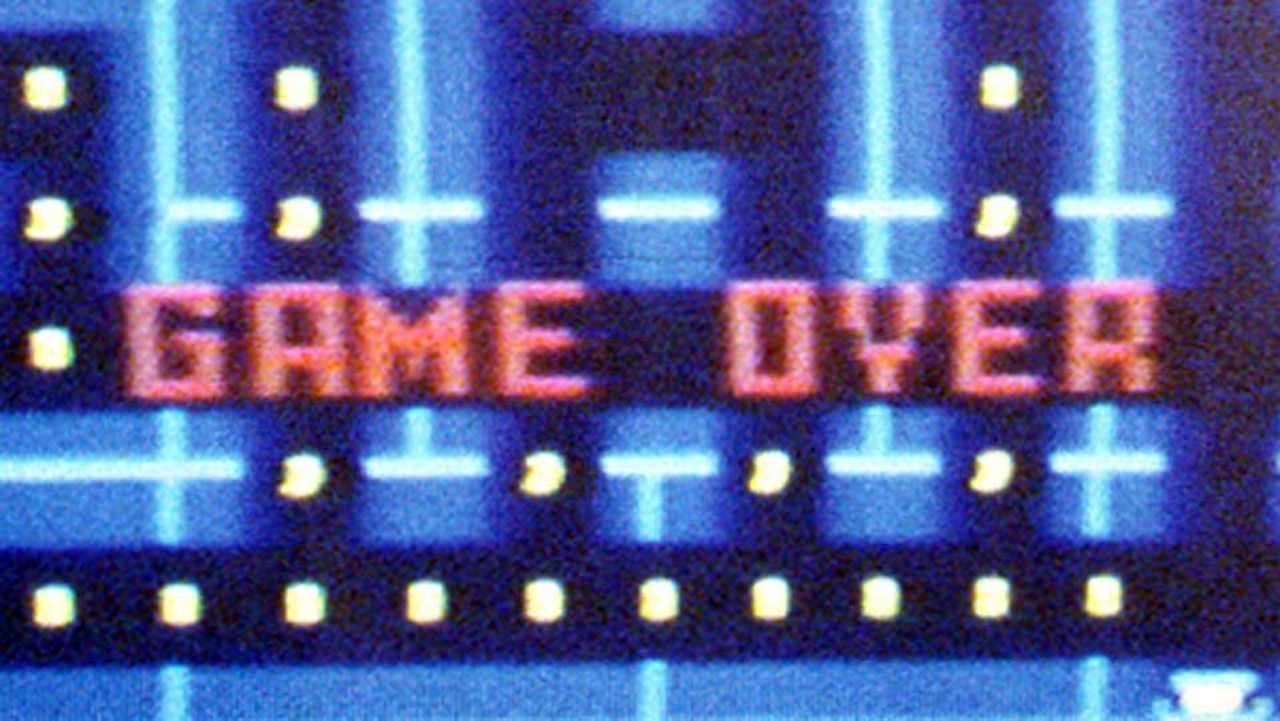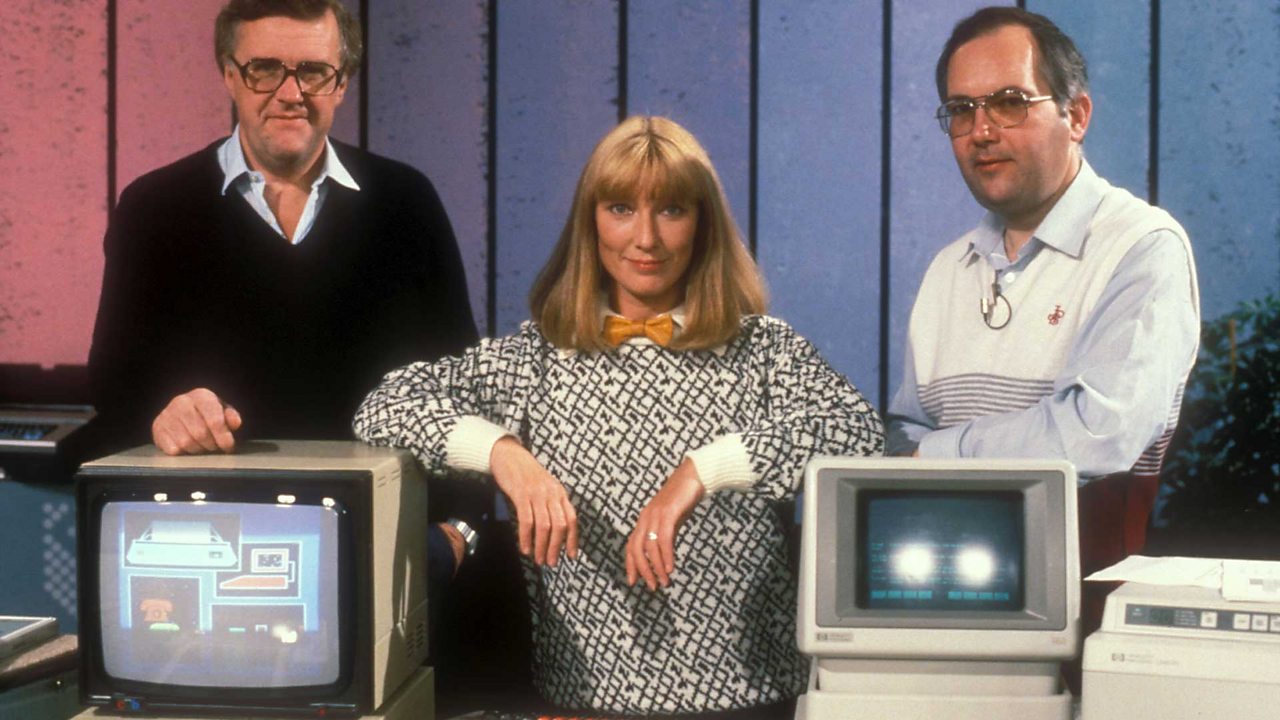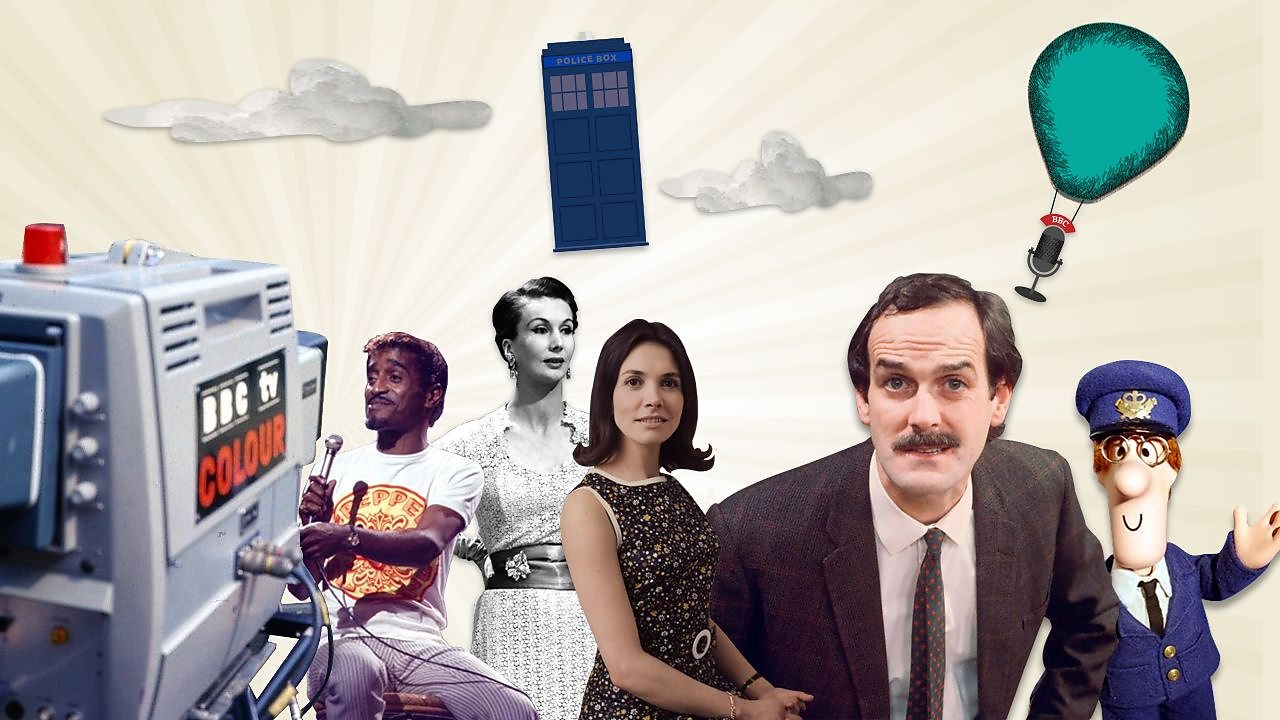The 8 Generations of Video Game Consoles
Video games have come a long way since Pong wowed the world in the early 1970s. With the launch of the Sony PlayStation 5 and Xbox Series X, the ninth-generation of games consoles is now upon us. To find out how we got to this point, here is a brief history of consoles as seen on the BBC.
1972: First generation – dots and dials
In 1972, the humble television set was transformed from a passive device into an interactive one, with the launch of the first commercial home videogame console, the Magnavox Odyssey. In one revolutionary step, home entertainment changed forever.
Odyssey games were composed of a maximum of three square dots and a single, vertical line - all monochrome - which was all the system was capable of generating. In an effort to add a little colour and variety, plastic overlays were provided, which could be placed directly onto the television screen.
To control the action, dials were used rather than buttons and a directional stick. Indeed the only button was the one to reset the game.
Games were stored on printed circuit boards that plugged directly into the console.
The Odyssey also provided gaming with its first peripheral - a light gun.
1976: Second generation – no coins necessary
Second generation consoles were defined by the microprocessor. In 1976, the Fairchild Channel F (known in the UK as the Grandstand) became the first home games machine to employ one, heralding a new era of colour and sound.
The limited printed circuit boards of the first generation gave way to complete games stored on cartridges, while those unwieldy dials became directional control sticks.
So when a series of coin-operated machines - Taito's Space Invaders, Namco's Pac Man and Nintendo's Donkey Kong - started gobbling up coins in arcades all over the world, the consoles were well placed to bring these arcade experiences into the living room.
It was Atari who best understood the importance of having these coin-op juggernauts on its 2600 system. Its conversion of Space Invaders was an instant success - perhaps gaming's first 'killer app' - a game so appealing that people bought the console just to play it. This helped Atari become the dominant force in the console market, outselling its closest rival, the Intellivision, by nearly ten to one.
Atari's later 'killer apps' effectively killed the market. Gamers who bought Pac Man demanded refunds in droves, while a shoddy cash-in based on ET also bombed. Thus ended the second generation, in what became known as the “video game crash of 1983”.
1983: Third generation – turning Japanese
Like an 8-bit phoenix, the third generation of games consoles rose from the ashes of the Second Generation crash. This was the era of the 8-bit machines, bringing colourful graphics and inventive Japanese game design to the global masses.
Although there had been 8-bit, and - in the case of the Intellivision - even 16-bit machines in the second generation, it was the release of Nintendo's wildly popular 8-bit console, the NES, that defined the third generation. In some countries, the name became so synonymous with gaming that "playing Nintendo" displaced "playing a video game" in common parlance.
This was the generation that gave birth to iconic series that persist to this day, such as Super Mario Bros, Zelda and Metroid.
It also saw the emergence of Japanese arcade manufacturer Sega in the home entertainment arena with its Master System.
↗Fred Harris explains everything you ever wanted to know about bits
1987: Fourth generation – clash of the titans
War!
Nintendo, the undisputed king of the third generation, finally met a rival worthy of its crown. Sega released its new 16-bit Mega Drive (Genesis in the USA) in 1988, and aggressively marketed it against Nintendo's 8-bit behemoth.
The Mega Drive gave developers the power to create games with fast multi-directional scrolling and the kind of audiovisual flair hitherto only available in state of the art arcade machines - suddenly the NES was beginning to look its age.
Sega aimed the Mega Drive squarely at the teenage demographic, with marketing that flew in the face of Nintendo's long-established family friendly image. With Nintendo's 16-bit follow-up to the NES still far from release, Sega was able to make substantial inroads into Nintendo's market lead, with a raft of licensed sports games and quality arcade conversions. By the time the Super Nintendo (or SNES) was released in 1990, many people saw Sega and Nintendo as equals.
What followed was a veritable clash of the gaming titans, as the two machines - embodied in the public consciousness by their mascots Sonic and Mario - vied for supremacy. Momentum seemed to swing from one system to the other and back with every major release.
Capcom's Street Fighter II - the world's most popular arcade game - came to the SNES as a major coup, and was a source of great envy for Mega Drive owners, who eventually got a version over a year later. Sonic 2 was a massive hit for Sega, keeping their momentum going, but games like Super Mario Kart and the technically impressive Donkey Kong Country suggested that the SNES would have a longer tail than Sega's machine.
Sega attempted to extend the life of the Mega Drive with hardware add-ons. First came the Mega CD - which enabled games featuring rudimentary video - to modest success and no little controversy. Later, the cartridge-based 32X promised 3D graphics akin to the next generation of systems - a sort of generation four-and-a-half machine - but sales were poor and Sega failed to support it.
All the while, Nintendo churned out hit after hit on the SNES.
1993: Fifth generation – enter the mainstream
The fifth generation of video games was arguably the most transformative era in gaming history, thanks to the widespread adoption of CD-Rom technology and a shift from sprite-based 2D games towards the polygonal 3D graphics that were already wowing PC and arcade gamers. It was also the generation that saw Sony enter the console market fray.
A slew of competitors introduced new machines, eager to steal a march on Sega and Nintendo. Fujitsu's FM Towns Marty, NEC's PC-FX, the Amiga CD32 and the Atari Jaguar all launched early, but high costs and a dearth of truly great titles meant they lured few people away from Sega and Nintendo's 16-bit machines.
3DO eschewed a bespoke console in favour of machines from multiple manufacturers - Panasonic, Sanyo and GoldStar - that met its specifications. 3DO delivered a 'next generation' experience, but by the time it had the games to match the impressive tech, it was already too late.
Sony's 32-bit PlayStation launched in Japan in 1994. With neither Sega's stellar arcade pedigree, nor Nintendo's impressive in-house games development heritage behind it, Sony relied heavily on third-party developers to support its system. Securing a deal with Namco to bring arcade hits Tekken and Ridge Racer to PlayStation was shrewd, and the conversions drew favourable comparisons with Sega's flagship Saturn conversions of its own arcade titles - Virtua Fighter and Daytona USA.
The hotly anticipated Nintendo 64 arrived in 1997. Nintendo's machine was cartridge-based, and came with a unique analogue controller to complement its peerless launch game, Mario 64. Cartridge manufacturing was expensive though, and while the low cost of CD Roms enabled Sony and Sega to re-release hit games at budget prices, Nintendo was unable to follow suit.
Nintendo's sales were respectable, and its first-party games were among the best it has ever produced, but it fell far short of its own lofty sales standards. Sega meanwhile, floundered - the Saturn only sold well in its native Japan - and ended the generation a distant third.
It was Sony who emerged victorious from the fifth generation, with PlayStation dwarfing the sales of its longer-established rivals and becoming a massive hit with players and developers alike. The console's diverse software library showcased the best of Eastern and Western game design across a wide variety of genres.
PlayStation became ingrained in popular culture, particularly in the UK - where many of its biggest hits were developed. Games like Wipeout captured the clubbing zeitgeist, while Lara Croft (despite Tomb Raider debuting on the Sega Saturn) became both the digital face of 'girl power' and an unofficial mascot for the system. For many, PlayStation legitimized video games in the eyes of the mainstream, forever shaking off gaming's 'unfashionable' image.
1998: Sixth generation – contenders ready
The Sixth Generation of consoles saw one contender drop out, a new contender take its first steps, and a move towards online gaming.
Sega had a point to prove following the Saturn's disappointing performance, and it kickstarted the sixth generation in 1998 with its 128-bit Dreamcast system. The new console boasted a built-in modem for online play, detachable memory units with visual displays that could be used to play simple games on the go, and - crucially - a Sonic the Hedgehog game.
Despite critical acclaim for games like Metropolis Street Racer, Soulcalibur, Jet Set Radio and Shenmue, and a general consensus that Dreamcast was a huge improvement over its predecessor, the system was unable to generate big sales.
Sega's brand had been tarnished by the successive failures of the Mega CD, 32X and Saturn, and ultimately - in part due to the feverish levels of anticipation for Sony's PlayStation 2 - Dreamcast never stood a chance. Sega discontinued Dreamcast in 2001, and became a multi-platform games publisher.
With over 100 million PlayStation consoles sold, Sony's decision to ensure its next generation PS2 was backwards-compatible was a masterstroke. If you owned a PlayStation and a collection of games, here was an extra incentive to remain loyal to PlayStation - you could even use your existing DualShock controller on the machine. For anybody who didn't own a PlayStation, the PS2 offered the perfect getting-on point; the tantalising prospect of a sixth-generation machine that could also play all those fifth-generation games you'd missed out on, and perhaps been secretly envious of.
Those who made the switch were treated to arguably the most varied collection of console games in history, encompassing mainstream hits from the Metal Gear Solid, Gran Turismo and Grand Theft Auto series, meditative epics Ico and Shadow of the Colossus, offbeat curios like Katamari Damacy and everything in between.
PS2 sold three times more than Xbox, Gamecube and Dreamcast combined, and even eclipsed its predecessor, becoming the most successful home console of all time.
Microsoft's first console, Xbox, launched in 2001. A sizeable beast, it positioned itself as the most powerful sixth-gen machine and came with a built-in hard drive, an operating system geared towards online play, and very large controllers. Perhaps most importantly, it launched with a legitimate 'killer app' in the form of Halo - a game that made the console coveted among first person shooter fans. Halo 2 arrived in 2004 featuring online play, and did for Microsoft's Xbox Live subscription service what its predecessor had done for the console itself.
Expectation was high for the Nintendo Gamecube; the N64 had not sold as well as Nintendo's previous machines, but in Mario 64, Ocarina of Time and Goldeneye it had some of the generation's best games. Cartridges were out, replaced by a proprietary mini DVD format - which deterred piracy, but robbed users of the ability to play DVDs and CDs - and Gamecube was much cheaper than its rivals. At launch though, Nintendo's most beloved and iconic game series were conspicuous by their absence (sorry Luigi). It fell to LucasArts' Star Wars: Rogue Leader to showcase the machine's graphical prowess, and - ironically - Sega's Super Monkey Ball to deliver that Nintendo 'feeling'.
2005: Seventh generation – moving on up
The seventh generation of consoles was the era of wireless controllers, digital game downloads, motion control and (unless you had a Wii) high-definition graphics.
The gaming landscape settled into something like its current form, as Sony and Microsoft went head-to-head with powerful machines (yes, they can run Crysis...just) that blurred the lines between console and PC, while Nintendo dropped out of the technological arms race and delivered a low-spec machine built around an innovative motion-control interface.
Microsoft launched its Xbox 360 console in 2005, a year before Sony's PS3 and Nintendo's Wii, and made huge strides. Launch titles like Call of Duty 2 and Project Gotham Racing 3 - with detail so sharp you could glance in the side mirrors - sold the benefits of high-definition gaming to anybody with a compatible TV set. With such an obvious jump in power over the previous generation, Xbox 360 converted many to its cause. All that power came at a price though; early models of the Xbox 360 were plagued by manufacturing problems - including one so infamous it got its own nickname; 'RROD' (Red Ring Of Death).
After successive generations of dwindling sales, Nintendo tried something different. Wii may have lacked its rivals' HD sheen and horsepower, but it more than made up for it with the intuitiveness of its control mechanism. Wii Sports - bundled with the system - appealed to those hitherto untapped, non-gaming demographics who balked at the prospect of using an Xbox controller, but knew exactly how to swing a pretend tennis racket. Wii was an instant sensation, revitalizing Nintendo's fortunes. Its success saw Xbox and PlayStation quickly develop their own motion-control systems, Kinect and Move. Wii's controller and lack of power left it unsuited to multi-platform development however, so many of the generation's biggest games were not ported to the system.
PS3 arrived as the successor to the two most successful games consoles of all time, but got off to a rocky start, and spent much of the generation playing catch-up. PS3 incorporated a Blu Ray player and a cell microprocessor, making it more expensive than Xbox or Wii. Launch games did little to showcase PS3's much-touted power, as most multi-platform games were made for the more developer-friendly Xbox 360 and ported over to Sony's machine. Aside from system exclusives, few games really pushed PS3. A price drop and some popular exclusives, like Naughty Dog's Encharted series and The Last of Us, saw Sony eventually claw back Microsoft's lead, but PS3 never sold as well as its predecessors.
2012: Eighth generation – casuals vs hardcore
The eighth generation saw Microsoft attempt to reposition Xbox as an all-in-one home entertainment device, while Sony focused more on core gamers. Nintendo continued to distanced itself from its rivals by further iterating on the unique inputs of the Wii.
Launched in 2012, Wii U was backwards-compatible with all original Wii games and many accessories, and was capable of the high-def graphics and performance of Sony and Microsoft's seventh-gen machines. Once again, Nintendo experimented with a new control device - the GamePad - a hybrid touchscreen and games controller that enabled 'Off-TV' play at a limited range. Wii U had no Wii Sports equivalent, however - something to clearly communicate the potential of the GamePad - and it never captured the public's imagination in the way the Wii Remote had. Wii U sold poorly in comparison to its illustrious predecessor, but its combination of portable and TV gaming set the groundwork for its popular successor - Nintendo Switch - which launched in 2017.
Is Switch eighth gen or ninth gen? We don't know. Let's say it's ninth because we're running out of space.
Xbox 360 and PS3 had effectively tied the seventh generation, but any hopes Microsoft might have had of finally leapfrogging its rival were hamstrung by a series of high-profile missteps and U-turns during the initial promotion for its new Xbox One. It seemed as if all of those seventh-generation gains might be wiped out before you could say 'Xbox on'.
Sony did not miss the opportunity. Developers were wooed - PS4 ditched the complex architecture of its predecessor. Retailers and gamers appreciated Sony's clearer messaging around second hand games. Tech-heads were impressed by the system's specifications compared to Xbox One, and the wider public by its lower price point. It seemed like the eighth generation could only go one way.
Out in the wild, however, the performance gap between the machines was not so pronounced, manifested in minor differences to frame rates and resolution, nothing revolutionary - and both machines initially sold well. PS4 went on to become Sony's most successful console since PS2, while Xbox One is believed to have sold more units than the original Xbox, but fewer than Xbox 360.
Games on PS4 and Xbox One were often strikingly similar. The days of being able to tell what machine a game was running on just by looking at it were over for all but the most eagle-eyed observers. Another generational leap in graphical fidelity had driven premium game development costs higher, so it became common for developers to release games on both machines. Very few titles remained format-exclusive, and thus the software libraries were largely identical. Controllers had been honed to homogeneous perfection, and non-gaming applications were largely interchangeable. Until sony launched its PSVR virtual reality headset - a move Xbox has resisted - there was little to really distinguish one console from the other.
Both consoles received hardware revisions during the generation, with the PS4 Pro and Xbox One S and X offering improved resolution over their base models.
With their regular software patches and firmware updates, and wide array of apps and multimedia features, it could be argued that PS4 and Xbox One resemble nothing so much as gaming PCs. Which begs the question: without offering the 'plug and play' simplicity of their forebears, are these machines even consoles anymore? Is the games console now a thing of the past?
We've come a long way from the first generation. It's been quite the Odyssey.


